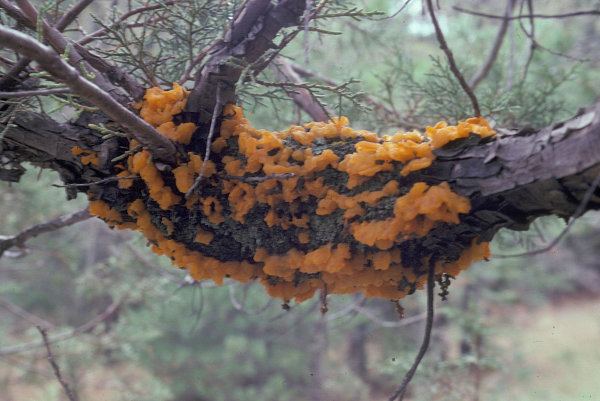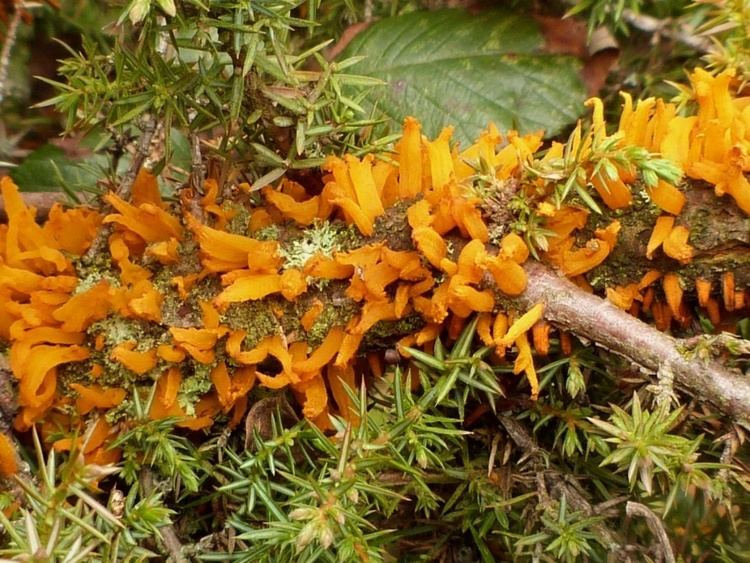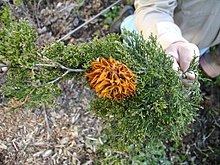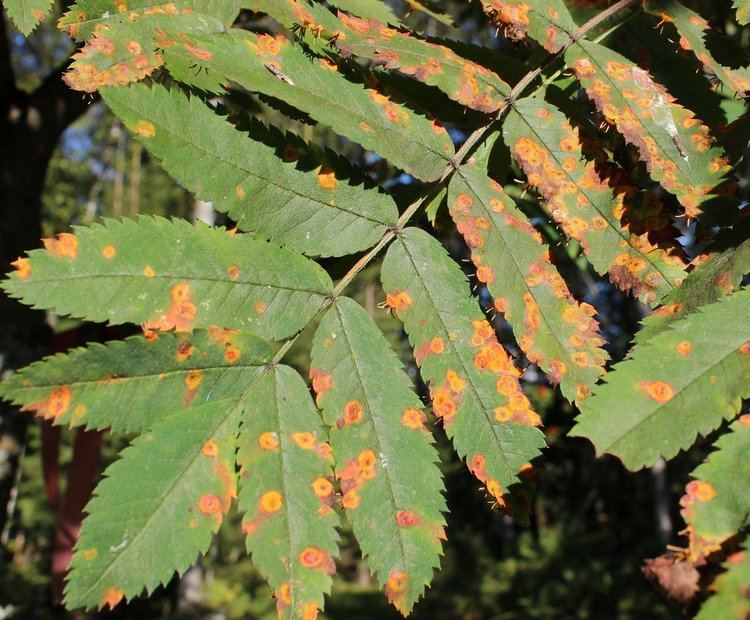Scientific name Gymnosporangium | Division Basidiomycota Higher classification Pucciniaceae | |
 | ||
Lower classifications Gymnosporangium sabinae, Gymnosporangium juniperi‑virginianae, Gymnosporangium clavariiforme, Gymnosporangium globosum | ||
Gymnosporangium libocedri fungi kingdom
Gymnosporangium is a genus of heteroecious plant-pathogenic Fungi which alternately infect members of the family Cupressaceae, primarily species in the genus Juniperus (junipers), and members of the family Rosaceae in the subfamily Maloideae (apples, pears, quinces, shadbush, hawthorns, rowans and their relatives). According to the Dictionary of the Fungi (10th edition, 2008), there are about 57 species in the genus.
Contents

In junipers (the primary hosts) (see photo), some species of the fungus form a ball like gall about 2–4 cm in diameter which produces a set of orange tentacle-like spore tubes called telial horns. These horns expand and have a jelly like consistency when wet. In other species the telia are produced directly from the bark of the juniper with no obvious gall formation or swelling such as in G. clarvariforme . The spores are released and travel on the wind until they infect an apple, pear, or hawthorn tree.

On the secondary hosts, the fungus produces yellowish depressions on the leaves. It also infects the fruit, which grows whitish tubes like a Medusa head. These are the spore tubes. The spores must then infect a juniper to complete the life cycle.

The fungus does not cause serious damage to junipers, but apple and pear trees can suffer serious loss of fruit production due to the effects of the fungus. Due to the economic impacts of the rusts in some areas where orchards are of commercial importance, some regions have attempted to ban the planting of and/or eradicate the coniferous hosts.

Gymnosporangium sabinae fungi kingdom


